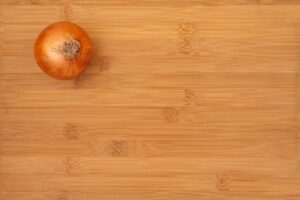On most or many topics the science and decisions forming recommendations evolve over time. And the general awareness about them evolves over time.
The evolution of cutting board product type recommendations and awareness provide a very simple, somewhat dull, example, but is a small reminder of how topic “experts” well, maybe they are correct and maybe they are not.
For this cut and dry topic, I used ChatGPT searches to gather the below content summarized for a quick glance.
Recommendations Summary — Plastic versus Wood
| 1990 | Plastic | Belief that easier to sanitize than porous wood. FDA emphasized plastic as safer option, including for commercial kitchens. (1) |
| 1990s | Plastic Hardwoods like Maple, Walnut or Cherry | 1994 research led by Professor Dean Cliver at the University of California; Prompted by lack of scientific evidence supporting plastic; he found that hardwoods had less Bacteria growthBacteria survival Surface damage that traps bacteria (2) Still, plastic continued to prevail in the early 2000s |
| 2010 | Plastic Glue free hardwoods like Maple, Walnut or Cherry | Plastic was still a common recommendation for its affordability and convenience (3) |
| 2025 | End grain, glue free hardwoods like Maple, Walnut, Cherry or Teak | Plastic boards have now lost much of their popularity due to knowledge about microplastics. Studies, like one from Environmental Science & Technology, highlighted that plastic cutting boards can release up to 50.7 grams of microplastics annually per person, making wood a preferred alternative. (4) |
Properties Summary:
| Hardwood | Plastic | |
| Bacteria growth | < Plastic | |
| Bacteria survival | < Plastic | |
| Surface damage that traps bacteria | < Plastic | |
| Free from Microplastics | Yes | No |
| Sanitization, Ease of | < Plastic | |
| Tough on knives | < Plastic, Endgrain best |
Additional, often repeated basics:
- Use separate boards for raw meats/poultry and produce/bread
- Choose non-toxic (e.g., beeswax, linseed oil, or walnut oil) finishes and avoid glues. (5)
Ponder that this is just about simple cutting boards and consider more intricate topics. To us, it is always key to do your homework and to take your pulse as to whether the information rings true to and for you.
Happy chopping!
Note: some choose stainless steel, bamboo and glass cutting boards. These are much less popular and not covered here.
ChatGPT sources:
- drweil.com nytimes.com
- pitbarrelcooker.com; robin-wood.co.uk; mamavation.com
- fsis.usda.gov; newsnationnow.com; woodcuttingboardstore.com
- nbcnews.com
- maisonpur.com; healthy houseontheblock.com
Photo credit; Pixabay onion-6769620_1280

